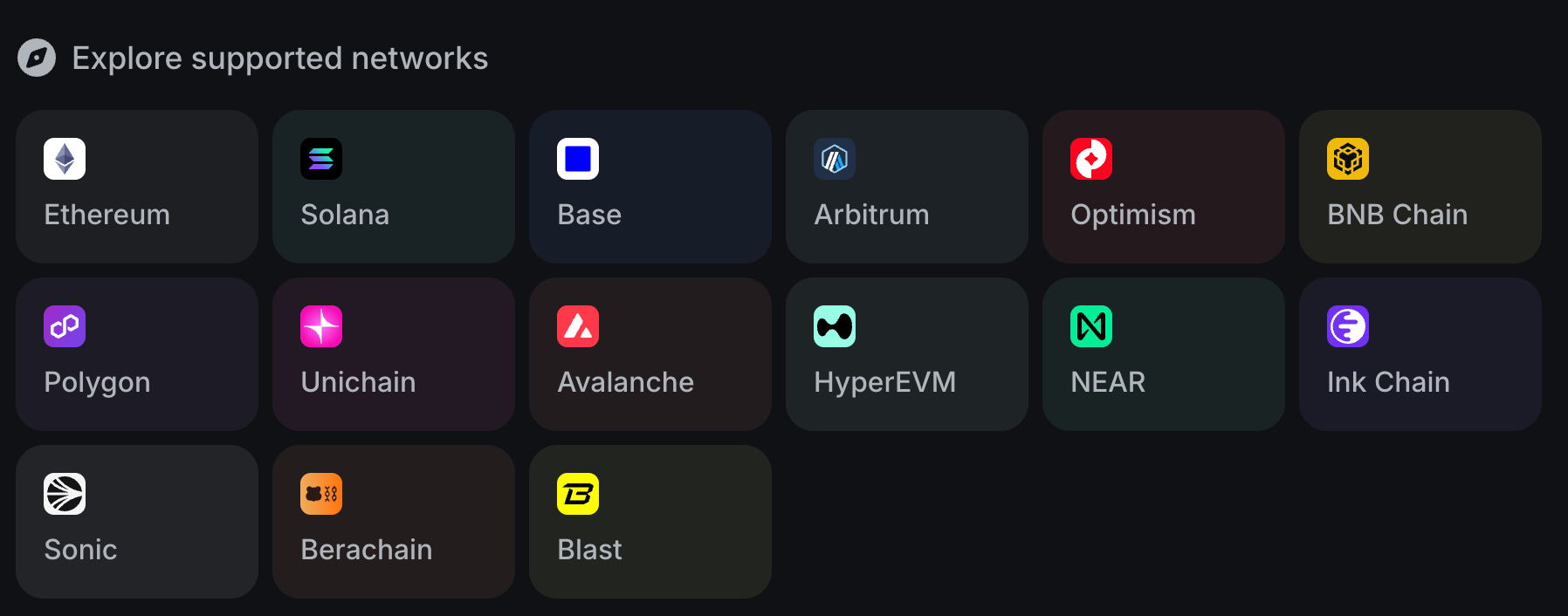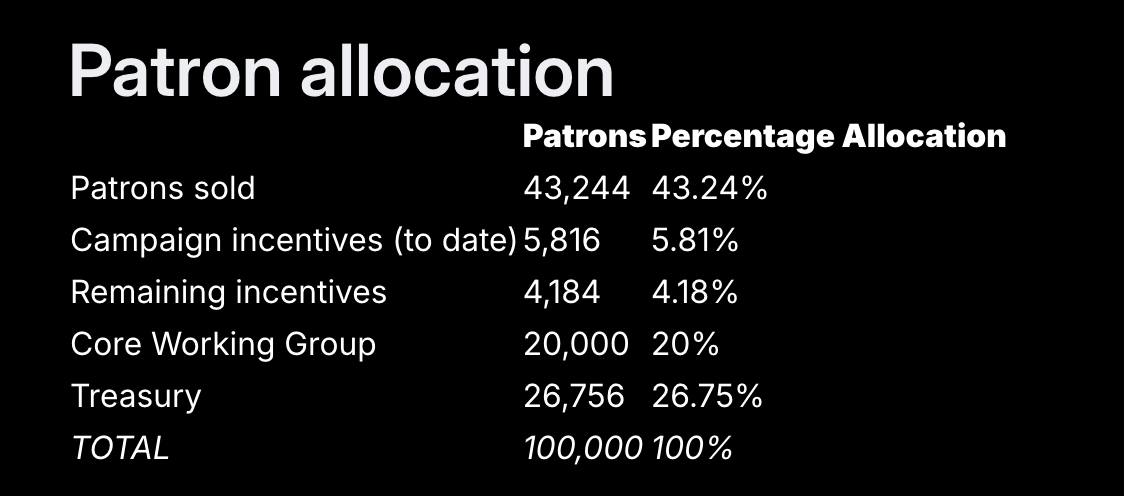Original | Odaily Planet Daily (@OdailyChina)

On November 27, Infinex, a new project created by Synthetix founder Kain Warwick, officially announced its upcoming Token Generation Event (TGE) and plans to conduct a public offering on Sonar with a fully diluted valuation (FDV) of $300 million, aiming to sell 5% of the INX token supply and raise $15 million.
Infinex: Full-Stack DeFi Services
Regarding Infinex, Odaily Planet Daily previously introduced the project during its initial launch and the start of the "mouth-to-mouth" activity. For details, please refer to “On the first day, it raised over $50 million: An analysis of Synthetix founder's new project Infinex” and “Infinex, which raised $60 million, joins the mouth-to-mouth activity: A quick guide to the four major module rules and interaction methods.”
From a positioning perspective, it is difficult to find a specific application category to define Infinex. Based on Infinex's own description, you can view it as a full-stack DeFi service window—first, Infinex itself will be a non-custodial wallet covering multiple chains; second, users can access various integrated DeFi services through Infinex; most importantly, throughout the entire Infinex usage process, a series of complex concepts such as wallet addresses, cross-chain bridging, mnemonic phrases, and gas fees will be abstracted away, allowing users to seamlessly access more DeFi applications as if they were using CeFi products without needing to understand or even know these concepts.
As of the publication date, Infinex has integrated 15 networks, including Ethereum, Solana, and Base, and the DeFi services offered cover multiple categories such as cross-chain trading (Swidge), perpetual contracts (Perp), liquidity staking, and other yield-generating services (Earn).

Valuation Status and Token Economic Model
Infinex's token economic model is relatively unique, and many long-term participants in the project have been somewhat confused about it. Here’s a brief overview.
Last September, Infinex sold 43,244 Patron NFTs to the community through multiple rounds of a so-called "sponsorship" financing model, raising a total of $67.696 million. The Founders Fund, Wintermute Ventures, Framework Ventures, and Solana Ventures, along with angel investors such as Ethereum co-founder Vitalik Buterin, Solana co-founder Anatoly Yakovenko, and Aave founder Stani Kulechov, participated in the NFT subscription.
According to Infinex's official documentation and Kain Warwick's own explanation, the total supply of Patron NFTs is 100,000, and the total supply of INX tokens is 10 billion, with each Patron NFT corresponding to 100,000 INX tokens. After the NFT sponsorship event concluded, Infinex disclosed the distribution of Patron NFTs, as follows:

- Sold Patron NFTs: 43,244 (43.24%);
- Activity incentives (including both distributed and remaining parts): 10,000 (10%);
- Core working group: 20,000 (20%);
- Treasury: 26,756 (26.75%), as unclaimed incentives will be returned to the treasury, this portion may change in the future;
- Total: 100,000 (100%).
In simple terms, you can understand Patron NFTs as another form of Infinex tokens, which includes both the sold Patron NFTs and other unallocated Patron NFTs (such as the upcoming 5% token public offering), and Patron NFTs will also be subject to various types of lock-up and release rules like regular tokens.
Additionally, some may have noticed that Infinex distributed μPatron in community activities. μPatron can be understood as a split version of Patron NFTs, where 1 million μPatron equals 1 Patron NFT.
As of the publication date, the floor price of Patron NFTs in the NFT trading market is currently reported at 1.79 ETH, approximately $5,372, which implies that the current market values Infinex's FDV at around $537 million.

Public Offering Rules Analysis
As mentioned earlier, this public offering will be conducted with an FDV of $300 million (which has some profit margin compared to the real-time market valuation of $540 million), aiming to raise $15 million and sell 5% of INX, with the platform choosing Sonar—insiders revealed that although Sonar's parent project Echo was acquired by Coinbase for $375 million in October this year, Sonar still operates independently for self-custodied token sales, so the rules will not be the same as those of the recently completed Monad IPO by Coinbase.
According to Infinex's official introduction, this public offering will have two participation paths: guaranteed quotas and lottery distribution.
The guaranteed quota is for users holding liquid (unlocked) Patron NFTs, with the specific guarantee strategy as follows:
- 1 Patron NFT: $2,000 quota;
- 5 Patron NFTs: $15,000 quota;
- 25 Patron NFTs: $100,000 quota;
- 100 Patron NFTs: $500,000 quota;
- The distribution follows an additive mechanism; for example, if you hold 32 liquid Patron NFTs, your quota will be: 100,000 + 15,000 + 2,000 + 2,000 = $119,000.
The lottery distribution is open to all users, and anyone can apply to participate, with the specific rules as follows:
- The minimum subscription amount is $200, and the maximum subscription amount is $5,000;
- If the subscription amount exceeds the subscription limit, orders will be allocated through a lottery;
- Each order has an equal probability of being selected, and if selected, the order will be fully allocated;
- Unfulfilled orders will be automatically refunded.
The most critical point is that this public offering will have a one-year lock-up restriction, but there are early unlock clauses. The specific design for early unlocking is as follows:
- At the time of TGE, if you choose early unlocking, it will be at a subscription price based on a $1 billion FDV;
- During the one-year lock-up period, this price will linearly decline to the initially set $300 million;
- If the trading price of INX after listing is higher than the real-time early unlock price, some public offering participants may choose early unlocking, making the unlock curve smoother.
Is It Worth Participating?
After Infinex disclosed the public offering rules, the lock-up restriction part sparked considerable controversy, as a public offering fully aimed at retail investors requiring a one-year lock-up period is quite rare in industry history.

Kain Warwick later seemed to respond to the public offering-related doubts on his personal X, but the content appeared quite strange: “It is worth mentioning that our goal in reviving the ICO is not to ensure that everyone can make money, but to replace the low liquidity, high FDV arbitrage model. In this model, almost no one can profit except for three venture capital firms…”
Returning to the public offering itself, according to community user nanhan ([@airdrop_nanhan]), the initial circulation ratio of INX after TGE may be less than 5%. A low circulation rate may indicate that INX has the potential to perform well in the early stages of listing, but due to the lock-up restrictions, public offering participants cannot cash out at the ideal subscription price based on a $300 million valuation.
Overall, Infinex's public offering is clearly most suitable for those who are optimistic about Infinex's future or have confidence in Kain Warwick's ability to innovate; conversely, it is entirely unsuitable for those who are particularly sensitive to immediate liquidity and focus on quick entry and exit. For a broader user base in the middle range, if interested in participating in the public offering, my personal suggestion is to keep an eye on the price movements after INX goes live, and if there is a profit opportunity, consider early unlocking at a certain premium (relative to the $300 million FDV) to secure profits as soon as possible.
免责声明:本文章仅代表作者个人观点,不代表本平台的立场和观点。本文章仅供信息分享,不构成对任何人的任何投资建议。用户与作者之间的任何争议,与本平台无关。如网页中刊载的文章或图片涉及侵权,请提供相关的权利证明和身份证明发送邮件到support@aicoin.com,本平台相关工作人员将会进行核查。



